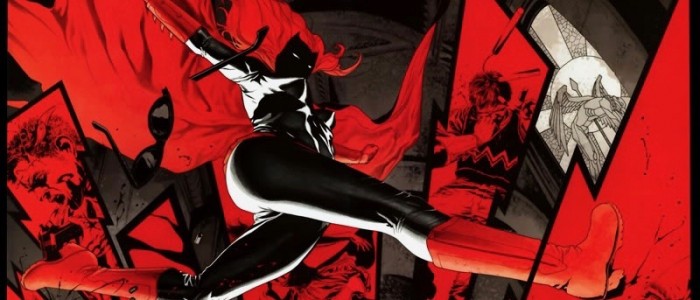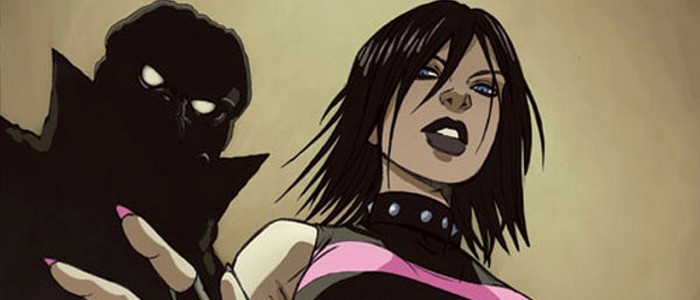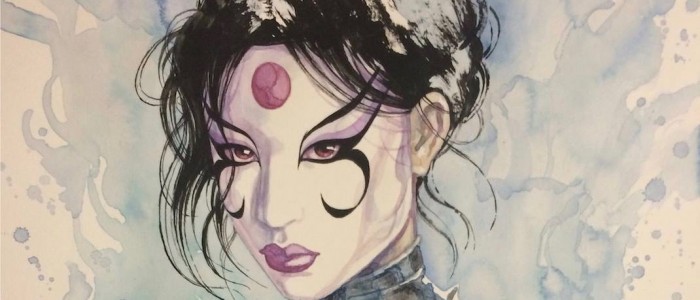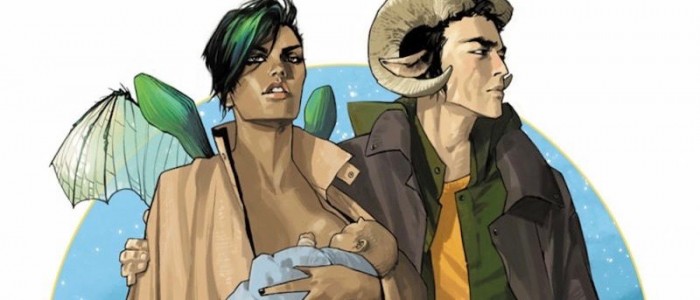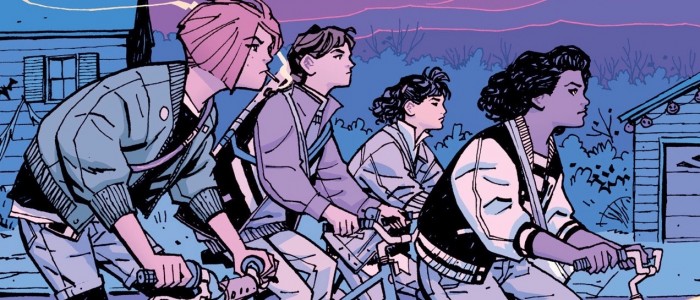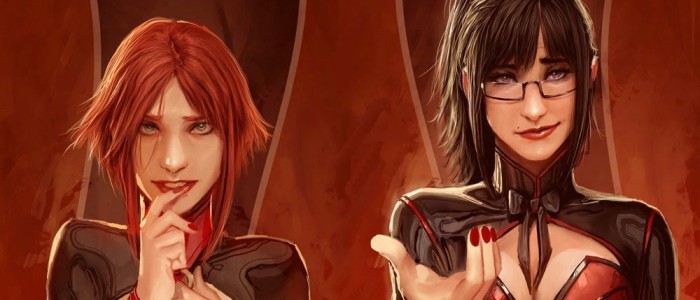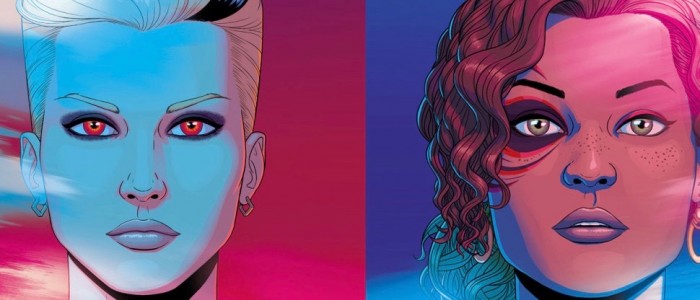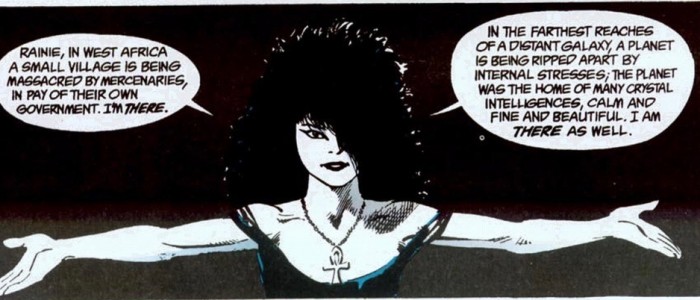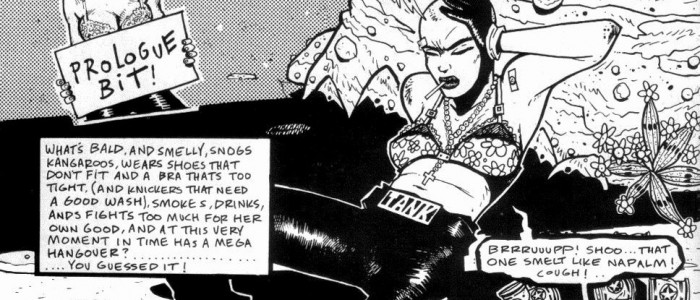10 Female-Led Comics You Should Read After Seeing 'Wonder Woman'
It's official: Wonder Woman has hit theaters, on a scale that rivals her Trinity counterparts Batman and Superman. When I say that Wonder Woman has been a feminist icon that has empowered women since her inception, I don't think I am telling you anything that you don't already know or haven't already heard in the months leading up to this blockbuster event. However, what you might not know, is that while Wonder Woman may be the most iconic female badass in the comic book world, she is certainly not the only one. And the list of incredible female characters extends far beyond the superhero genre.
From my experiences working in a comic book shop back in the day, many women that came in wanting to dive into the wonderful world of comics, arrived with the standard names in mind, whether they be the X-Men or the Gotham City Sirens (all wonderful choices, of course). However, they were always pleasantly surprised by the vast world of female-centric comic books that weren't even on their radar. While I love Batman and Preacher and the men of Sin City as much as the next nerd, it is always important to have a story that you can see yourself in, that you can pull you up when you need it, and makes you feel less alone. Comic books are for heroes of all shapes, sizes, genders, sexualities, and races. Some may wear capes and fight crime, but others just bring awareness to otherwise untold stories and perspectives.
With that being said, ladies (And gentlemen! I'm not here to discriminate!), if you want something to read after watching Wonder Woman, you really can't go wrong with these comics.
By Alan Moore and JH Williams III
Originally published in 1999, Promethea is an action/fantasy comic written by V for Vendetta and Watchmen writer Alan Moore and illustrated by the unfathomably talented JH Williams III. At quick glance, Promethea evokes many of the same qualities as Wonder Woman: a mythological female warrior, dressed in gold armor and ready for battle. However, don't confuse her for an Amazon, as this is a story about stories, and the kind of strength that women have had to muster during every era in history.
The story centers around Sophie Bangs, a student in New York researching a paper about the mysterious Egyptian folklore hero, Promethea. However, what she comes to realize is that Promethea is no ordinary myth. She is "...the words made flesh. The flesh made words." Similar to the characters of American Gods, Promethea is brought to life through the people that write about her. She is a story. As dark forces seek to destroy her, Sophie Bangs must use her creative mind to write about, and in doing so, become the warrior Promethea. Ancient orders, mystical beings, battles between realms, and absolutely fantastical visuals ensue. Promethea's five collected volumes bring to life a female heroine that embodies the roles of women through generations, be they a poetic muse, a lover and goddess, or a motherly angel in the trenches of World War I.
By Greg Rucka and JH Williams III
Wonder Woman may be the most iconic female superhero in the DC Universe, but she certainly isn't alone. This 2009 Detective Comics arc breathed new modern life into Batwoman, as she tackled a psychotic fairytale nemesis, known only as Alice, in what is quite possibly one of the most beautifully drawn comic books of all time.
Kate Kane is an army brat, having grown up with her twin sister with two active duty parents. After her mother and sister were kidnapped and murdered as a child, Kate vowed to serve, only to be discharged for being gay prior to the repeal of 'Don't Ask, Don't Tell.' With the assistance of her father, the Colonel, Kate found another way to serve, by becoming another dark crusader for Gotham.
In Batwoman Elegy, Kate faces her new arch nemesis, the mad leader of the Religion of Crime, who seeks to become queen of Gotham using hallucinogenic chemical weapons to turn Gotham into a fairytale bloodbath. Batwoman employs some of the standard "Batman Rules," such as maiming but never killing your target. But unlike the brooding and disturbed Bats, she comes from a place of honor and integrity. Her sense of justice is rooted deeply in her moral sense of duty, and yet she still comes off as incredibly human, wanting to find love and make her father proud. Batwoman has continued to impress in the years since this arc, delving deeper into her relationships, both romantically and with the city she has vowed to serve.
By Tim Seeley
Certainly not a superhero and certainly not an angel, Cassie Hack is the ultimate 'final girl.' Her normal life ended the moment she came under attack by the Lunch Lady, a traditional horror movie slasher of sorts...and Cassie's own mother. Cassie prevailed, becoming another in a long list of archetypal lone female survivors of slasher movies. However, wanting to spare others from the tragedy that she experienced, Cassie became a killer herself. Specifically a vigilante, traveling from town-to-town with her trusty ogre of a sidekick, Vlad, hunting down and taking out those that seek to murder teens in this witty and entertaining ode to the slasher movie genre.
Having plenty of experience identifying the difference between slashers and killers (Slashers always come back for a final scare. Duh!), Cassie manipulated the used and reused and used again age old female tropes to her advantage to catch and kill a whole lot of bad dudes (and dudettes), including some familiar faces like Chucky, Jason Voorhees, and the monsters from Evil Dead. If you didn't think this cool sub-cultural girl could get any cooler, there is even a crossover with the Suicide Girls. Cassie Hack is no damsel in distress, and she knows better than to run upstairs instead of outside. Anyone who is a fan of horror will love this bonafide, baseball bat-wielding badass.
By David Mack
In an alternate reality, Japan has a strict no crime policy, one that includes the brutal murder of criminals and the assassinations of corrupt politicians. However, the Japanese government cares more about keeping the peace in whatever way is most economic for both the Yakuza crime lords and the government. The Noh is a group of eight female assassins run by a former WWII general. Each assassin has her own methods, including "The Siamese" conjoined assassins with added bionic limbs. Kabuki, the deadliest of them all, wears a bullet proof mask to cover the scars that disfigure her face, a brand given to her by one of the most untouchable and evil men in Japan. Her weapons are farm sickles and her fingernails, all coated in clear poison.
The only thing more fascinating than the story itself is the way it is put together. David Mack is both the writer and the artist behind the series, exploring different mediums and styles of art for each volume. From black and white, Sin City-style in volume one to something that borders more on visual poetry in volume two, Kabuki is one of the more visually adventurous comic books out there. The style of writing, particularly Kabuki's narration and inner reflection, makes the story flow across the artwork as if you were watching it. The story itself deals with incredibly dark themes, but it never feels gratuitous and it is certainly not without its eloquence.
By Brian K. Vaughn and Fiona Staples
Narrated by Hazel, the daughter of a couple from two warring species, this science fiction space opera tells the story of Alana and Marko, on the run from war and authorities and trying to save themselves and their illegal mixed race infant daughter. This story operates on the scale of Star Wars or The Lord of the Rings, while the core relationship feels more like a Shakespearean tragedy. Alana and Marko face everything from mercenaries to monsters to strange robot princes to (perhaps most frightening of all) ex-wives and parents in their journey to exist in peace and raise their daughter.
As made clear from the cover of the first volume (which features Alana breastfeeding Hazel), Saga doesn't shy away from themes of female empowerment and the courage of motherhood. Saga brings a galactic battle to a brutally honest level, through a cast of characters representing the forgotten side of war. Beyond our lead characters on the run for simply falling in love and having a baby, Vaughn includes characters such as a Izabel, the ghost of a girl severed in half by a land mine, and Sophie, a young child sex slave rescued by a bounty hunter on his pursuit of Marko and Alana. This is a story of the tragedy of war and the things worth fighting and sometimes dying for.
By Brian K. Vaughn and Cliff Chiang
With the success of Stranger Things and the upcoming remake of Stephen King's IT, the revival of the coming-of-age stories from the 1980s is in full swing. However unlike most '80s coming-of-age tales, Paper Girls is a complex science fiction epic following a group of young girls caught in the middle of something much bigger than themselves and their paper route. Battling everything from mysterious hooded figures to nasty teenage boys, the Paper Girls have the same spunk as the 12-year-old boy counterparts that we are used to seeing in these stories. Characters like Mac, the tough girl with a smoking habit that the local cops already know by name, and was the first paper boy in this group, who wasn't, you know, a boy.
After one of the girls has her walkie talkie stolen, the girls don't seek the help of adults, they take justice into their own hands...only to discover a strange alien device in the basement of an unfinished house. From there it is a whirlwind of confusion and fear, as the Paper Girls, armed with hockey sticks, chase down the mysterious goons, and get confronted by bizzaro flying dino-demons, in what can only be described as a rapture-type...thing. The story only gets weirder and wilder from there and I fear I've already said too much. But if you want insane science fiction storytelling grounded by totally human and lovable characters, you can't go wrong with Paper Girls.
By Stjepan Sejic
Sometimes, the hardest female characters to portray are not the ones in the predominately male worlds of science fiction and action, but the ones that tend to be misrepresented in their more common roles as romantic interests and sexual objects. Sunstone is a story that honestly portrays two women not only exploring their first same-sex relationship, but also their suppressed fetishistic desires. Ally, a domme looking to find her first true submissive, and Lisa, a sub who has only fantasized about being in a BDSM relationship, meet in an online chat room and decide to take their online relationship to the next level by meeting in person.
The beauty of Sunstone comes not only from its frank and open discussion of different kinds of female sexuality, but in the way that it beautifully and hilariously navigates the awkwardness that comes with real life, like when you can't figure out what outfit best suits the kind of domme you want to be on a first date, or that awkward moment when you want to seem cool and sexy, but you really have to pee. As their relationship continues, this romantic comedy artfully and realistically portrays what a real BDSM relationship is like, cutting through a lot of the misconceptions and misrepresentations ever present in today's media. Sunstone is sensual, sexy, and has a lot heart.
By Kieron Gillen and Matthew Wilson
Every 90 years, a handful of gods manifest into the bodies of young adults in order to walk the Earth again. Known as The Pantheon, they come to life as pop stars, worshipped and adored and hated, but only for two years. At the end of these two years, they die. Each god of the Pantheon is a different poster-being for some pop culture cliche or another. There's the gorgeous teen pop star, Amaterasu, whose concerts literally cause the audience to pass out in orgasmic euphoria to the elusive 'underground' star, The Morrigan, who is so underground you have to break into abandoned underground stations if you want to see her, and the androgynous Lucifer, otherwise known as Luci, in the guise resembling the Thin White Duke, who showcases an apathy towards fame that just seems too cool for school.
However, through this mystical pandemonium, we find our voice in a human girl by the name of Laura. A super-fan of every member of the Pantheon, Laura comes to the aid of Luci after the deity finds herself arrested for a very public murder she claims not to have committed. Putting her faith in the devil, Laura goes to meet the other gods brought to life in the Recurrence, in this mystical story about fandom, technology, pop culture, and obsession.
By Neil Gaiman
The nerd world is hot and heavy right now over the adaptation of Neil Gaiman's novel, American Gods over on Starz. However, Neil Gaiman is perhaps best known for his comic book work, having created an elaborate mythology for his acclaimed series, Sandman. Within the pages of this classic series, a spin-off was born in the form of Sandman's (Dream of the Endless) older sister, Death of the Endless. The Endless are the most powerful entities in the universe, older than anything known or unknown. Death is exactly her namesake – the personification of the end of life. She takes the recently deceased and guides them onward. "But in the end, I am there for all of them."
Unlike the typical grotesque and terrifying, grim reaper versions of Death, Nail Gaiman's Death is a friendly, caring, goth girl with an ankh around her neck and eyeliner representative of the eye of Horus. She is a source of wisdom and nurturing. Like the mother that brings you into the world, this version of Death delivers you to the afterlife with warmth and understanding. Appearing as a recurring character in both Sandman and Lucifer (another spinoff from the Sandman series), Death is a DC heroine too often overlooked. Unlike the others on this list, Death is a character, not a series so whether you read all ten volumes of Sandman (highly recommended) or just pick up the single collected volume of Death's collected stories, this beloved, otherworldly character is worth your time and attention.
By Jaimie Hewlett and Alan Martin
A little bit Mad Max, a little bit Borderlands, and a whole lot of attitude, Tank Girl is a feminist icon created by Jamie Hewlett (co-creator of the Gorillaz) that is about as anti-convention as you can get. This dirty, violent, and vulgar character lives in a tank with 'some really big 'n' violent weapons.' She drinks beer, chain smokes, and has questionable encounters with horny mutant kangaroos in post-apocalyptic Australia. She is magnificent.
This self-aware black and white comic is often chaotic, with a story style fitting her punk rock exterior. After failing to complete a rather strange mission for Sergeant Small Unit involving a colostomy bag, Tank Girl has the whole of Australia on her back. In what kind of stands as a giant middle finger to over sexualized female comic book characters, Tank Girl often times appears only in a bra, or shirts that are only shirts in name alone. The unapologetic and often crass Tank Girl has been a feminist icon since her creation in the '80s, finding herself as a popular protest image for the lesbian community in the UK, particularly fighting Margaret Thatcher's "Clause 28" that prevented the promotion of homosexuality and the acceptability of homosexuality. Though she may not be for the faint of heart, Tank Girl is the kind of empowering feminist that will leave all the boys shaking in their boots.

